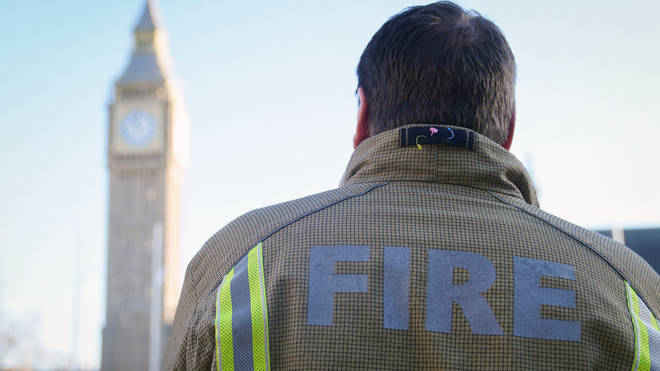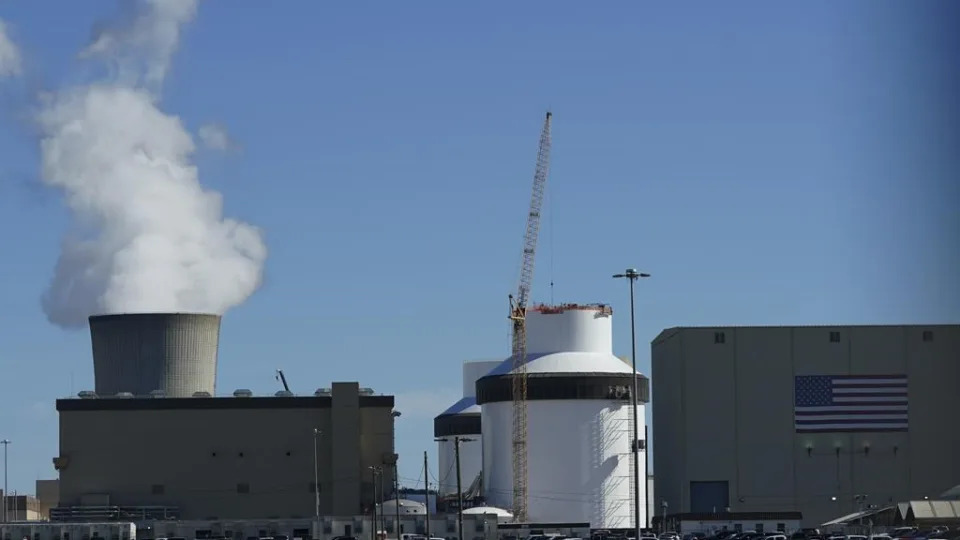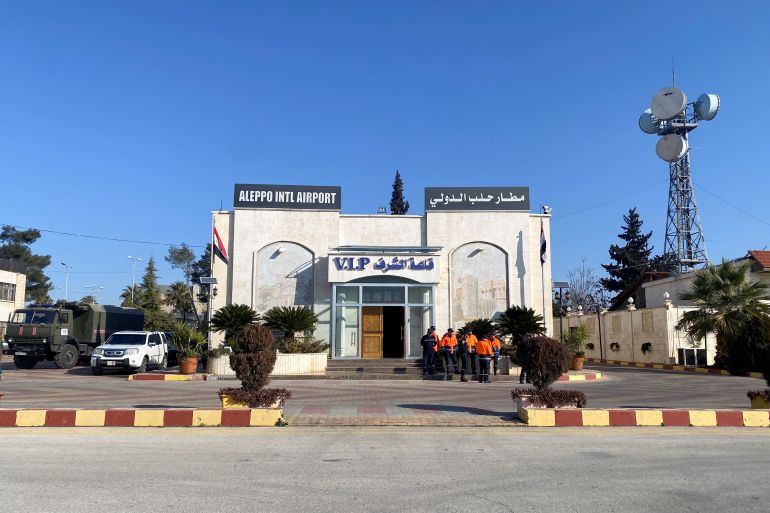There’s Still No End in Sight to Yemen’s Catastrophic War
Ongoing efforts to negotiate a peace agreement in Yemen haven’t brought an end to fighting between the Houthi movement and a Saudi-led alliance. Even if those efforts bear fruit, Yemenis will suffer the consequences of a humanitarian disaster for years to come.

Fighters loyal to Yemen’s Saudi-backed government march during a mass funeral for fellow fighters, killed during clashes with Houthi rebels, in Yemen’s western province of Hodeida on October 31, 2022. (Khaled Ziad / AFP via Getty Images)
03.06.2023
Jacobin .
Events in April 2022 raised hopes that Yemen’s war might finally be coming to an end. The United Nations Special Envoy Hans Grundberg, appointed in September 2021, successfully persuaded the fighting groups to engage in a two-month renewable truce while he tried to initiate serious negotiations for a long-term political settlement.
In the same month, the Saudi and Emirati governments terminated the ten-year tenure of Yemeni president Abdu Rabbu Mansur Hadi and the six-year tenure of his vice president, Ali Mohsen. They were replaced by an eight-man — as usual, no women — Presidential Leadership Council (PLC) composed of the rival leaders of the major anti- Houthi military and political factions.
After two renewals, the truce that Grundberg had managed to broker expired on October 2, 2022. The warring factions were not yet ready to end the suffering.
Stalemate
Over the past eight years, the overall military situation has remained largely unchanged. The Houthi movement, officially known as Ansar Allah (AA), governs about two-thirds of Yemen’s population living in one-third of its territory. A major Houthi offensive to take Marib governorate and city, which started in early 2020, remained the main military front until the 2022 truce.The Houthi movement governs about two-thirds of Yemen’s population living in one-third of its territory.
This was important because success there would have given AA control over the last remaining northern stronghold of the internationally recognized government (IRG) as well as one of the country’s major sources of hydrocarbons, in particular gas. This explains Houthi determination to continue their assaults despite very heavy losses: between June and November 2021 alone, the Houthis admitted to losing almost fifteen thousand men. When Mareb seemed likely to fall in late 2021, the Saudi-led coalition brought units from the Tihama region to prevent this from happening.
Since the assassination of former president Ali Abdullah Saleh in 2017 by his erstwhile Houthi allies, Ansar Allah has been fully and exclusively in control of most of Yemen’s population. Members of other parties in these areas are mere “tokens” unable to assert verbally or otherwise any views differing from those of the dominant Houthi movement.
The different political tendencies within the Houthi movement are kept under control thanks to the ultimate authority of AA’s leader, Abdul Malik al- Houthi. Tensions and internal dissent are likely to emerge into the open either if they suffer military reverses, or once peace returns and the glue of “external aggression” disintegrates.
By any standards, AA rule is authoritarian and retrograde, manifesting no respect for fundamental human rights of any kind. Any expression of dissent is liable to lead to arrest and ill-treatment. Arbitrary arrests and lengthy prison sentences are imposed capriciously, and executions, even of minors, follow court cases that bear no relationship to recognized legal procedures or proper transparency.
Freedom of expression is nonexistent: journalists are arrested, imprisoned, and given heavy sentences (including death) for no more than doing their jobs. Restrictions on women’s rights include having to be accompanied by male relatives when traveling and having to wear loose-fitting abayas to conform with Houthi dress codes. Arrested under the flimsiest of pretexts, women suffer even more than men when detained, facing violations including sexual harassment and assault.
The Stockholm Agreement
In 2017, the coalition allies, particularly the United Arab Emirates (UAE), were ready to launch a major offensive to retake Hodeida from AA, believing that this would force the Houthis to the negotiating table. Whether this might have worked will never be known, as the Western states supporting the coalition prevented this offensive from happening in anticipation of its expected disastrous humanitarian consequences.The Stockholm Agreement of December 2018 raised hopes among many that it would lead to a wider peace settlement.
A year later, the offensive was launched, with mainly Sudanese and Yemeni ground forces under UAE leadership. They succeeded in taking most of coastal southern Tihama and reached the outskirts of Hodeida city. As fighting took the predicted heavy civilian toll, the international community intervened and forced its interruption. Later in the year, with the Saudi government disgraced by its assassination of the journalist Jamal Khashoggi in Istanbul, international pressure drove it to bring about a meeting of the warring parties in Sweden.
The resulting Stockholm Agreement of December 13, 2018 raised hopes among many that it would lead to a wider peace settlement. The first part of the three-part agreement was a commitment to establish a committee to discuss the situation in Taiz. Nothing has been heard of this since. The second part was supposed to lead to the exchange of sixteen thousand prisoners, but there were just 1,080 prisoners exchanged in the end, almost two years later, in mid-October 2020.
The third part, known as the Hodeida Agreement, included the creation of the UN Mission to support the Hodeida Agreement (UNMHA) in January 2019 under UN Security Council (UNSC) Resolution 2452. This achieved a significant reduction in fighting in Hodeida governorate and stabilized the military front, limiting fighting until September 2021, when the main anti- Houthi forces withdrew one hundred kilometers southward, leaving the Houthis to take over.
The UAE-supported forces retained control over the southern part of the Tihama, including the Bab al-Mandab Strait, which controls the entrance to the Red Sea and, by extension, access to the Suez Canal. In May 2019, UNMHA failed to prevent Ansar Allah’s full takeover of Hodeida port.
The UNSC continues to renew the mandate of the UNMHA. However, the rationale for its existence is obscure, as all of Hodeida city and its governorate have been firmly under Houthi control since late 2021.
Southern Separatism
Following his dismissal as governor of Aden in April 2017, Aydaroos al-Zubeidi announced the creation of the Southern Transitional Council (STC) in May and appointed himself as its president. He installed his close ally, the Salafi leader Hani bin Breik, as his second-in-command.The formation of a joint government in which half were southerners — there were more than half in the previous one — took more than a year.
In the following years, tension between the STC and the Hadi government systematically worsened. Two major military confrontations took place, first in January 2018, and then decisively in August 2019, when the STC expelled the IRG forces and ministers from Aden.
The Saudis initiated months of difficult negotiations, finally achieving the signing of the Riyadh Agreement in November 2019. Intended to reconcile the two factions, it was the high point of Saudi-Emirati cooperation on this issue, as Crown Princes Mohammed bin Salman of the Saudi kingdom and Mohammed bin Zayed of the UAE both attended the signing ceremony.
Further cooperation between the two coalition partners in relation to southern separatism was limited. The UAE supported the STC, including its military actions, against the IRG after the signing of the Riyadh Agreement. According to its clauses, the entire agreement was to be implemented within two months. In reality, the redeployment of military forces had simply not happened by the time Hadi was replaced by the PLC in April 2022.
The formation of a joint government in which half were southerners — there were more than half in the previous one — took more than a year. It was finalized on December 18, 2020. During the remaining period of Hadi’s presidency, the presence of government officials in Aden was on sufferance by the STC, which has controlled the city since 2019. Hadi’s last visit to Aden as president took place in June 2018.
A few points need to be made about southern separatism. First, the STC is only one of many southern separatist factions, and many southerners continue to support Yemeni unity. Second, the STC’s international public prominence is due to political, diplomatic, financial, and military support from the UAE.
Third, the STC’s actual military control and political influence on the ground are limited to the areas of origin of its leaders. By contrast, IRG support in the south came mainly from the eastern part of Abyan and Shabwa governorates. Most Hadramis and Mahris do not support either of these factions.
Finally, STC governance is characterized by the same authoritarianism and oppression as found elsewhere. There are disappearances, arbitrary arrests including torture, and assassinations, particularly of Islamists despite the fact that their party, the Islah, is an important part of the IRG.
Saudi-Emirati divergence
Relations between the two main partners of the Saudi-led coalition have continued to follow increasingly divergent paths in the Yemen war and beyond. Following the interrupted Hodeida offensive of 2018, in the absence of a strategy to defeat AA and with the war proving to be a public-relations disaster, the UAE announced its “withdrawal” from Yemen in July 2019. It also promised to shift from a military to a diplomatic strategy.Relations between the two main partners of the Saudi-led coalition have continued to follow increasingly divergent paths in the Yemen war and beyond.
All this had consequences on the ground. First of all, it led to the abovementioned STC takeover of Aden. The growing breach between the Saudi and Emirati rulers is mostly visible in Yemen where the UAE has supported the STC against the IRG, including through direct military action.
Secondly, it increased UAE reliance on its Yemeni clients. None of these groups is likely to act against its UAE paymaster. Indeed, the rivalries and mutual hostility between them further strengthen UAE influence.
It is also notable that the UAE’s “withdrawal” remains partial. Although it withdrew military forces from positions in Aden, it remains present in the coalition headquarters in Aden, as well as keeping forces in Mokha and in positions controlling the Bab al-Mandab, including the air facilities constructed in 2021 on Perim Island.
Further east, the UAE has not relinquished control of Mukalla’s airport in Riyan, which remains mostly closed to civilian traffic and whose role as a prison and torture site may continue. Most importantly, it has shown no sign of abandoning its base and control over the Balhaf gas export port and terminal.
One military event affected the strategies of the Saudi and Emirati regimes alike and had a medium-term impact on their policies. Following a series of maritime and other incidents in 2019, a drone and missile strike on Saudi Arabia’s major oil facilities in Abqaiq and Khurais on September 14 that year caused major fires and forced the temporary closure of the facilities, reducing Saudi oil exports by half for weeks.
Although the Houthis claimed it, it was soon clear that the attack came from the north and east and consequently could not have been initiated by the Houthis. The lukewarm response of then US president Donald Trump was certainly below the expectations of the Gulf states:
That was an attack on Saudi Arabia, that wasn’t an attack on us. If we decide to do something, they’ll be very much involved, and that includes payment, and they understand that fully.
Looking for an Exit
Following this, and the actual Houthi attack on Abu Dhabi in January 2022, both states decided that they could not rely on the United States to defend them, and that self-reliance was therefore essential.
Houthi missile and drone attacks on Saudi Arabia increased in accuracy and frequency, with a focus on oil-related installations. In response to UAE support for the forces that expelled them from Shabwa governorate, they launched the first serious attacks on Abu Dhabi in January 2022, which damaged oil facilities and killed three civilians.Houthi missile and drone attacks on Saudi Arabia increased in accuracy and frequency, with a focus on oil-related installations.
Concerned about weak support from the United States, particularly after Joe Biden’s new administration asserted its intention to bring the Yemen war to an end, the Saudis and Emiratis agreed to transfer formal authority from Hadi to the PLC in Riyadh on April 7, 2022. Both parties hoped that ensuing negotiations would end attacks on their territories and enable them to terminate their military involvement in Yemen.
Both do indeed appear determined to end direct engagement in Yemen, though their perception of what a solution will entail is unlikely to bring sustainable peace and development for Yemenis. The establishment of the PLC may have been intended to create a united front between Emirati- and Saudi-backed elements to confront the Houthis. However, its first six months were predictably characterized by internal divisions and conflict between its disparate factions.
Legacies of War
Popular suffering increased as the Yemeni economy continued to collapse with the worsening stranglehold of Hodeida and other ports. The country’s GDP has contracted by 50 percent since the war started, leaving Yemenis with a per capita income of about US$600 — less than half of its value before the war.
Alongside the blockade of the Red Sea ports, the economic war has been the main cause of the worsening living conditions for the population at large. In addition to manipulation of fuel supplies and prices, the IRG’s shift of the headquarters of Yemen’s central bank has been the main weapon of the economic war.
This led to the interruption of salary payments to about 1.2 million government staff, most of whom have been paid intermittently since then, averaging about half a month’s salary every few months. To help the IRG finance the import of basic necessities — remember that Yemen imports 90 percent of its staples, and all of its medical supplies — the Saudi kingdom provided the Aden Central Bank of Yemen with $2 billion in 2018 — an amount that was exhausted by the end of 2020.
The other major policy intended to strangle the Houthis financially has been the printing of currency by the IRG. This has led to a widening divergence in the value of the Yemeni riyal between the Houthi-controlled areas and the rest of the country. Starting at a ratio of 215 to 1 with the US dollar in 2014, the currency rapidly lost value. However, it was only with the printing of new banknotes that the situation became critical.In 2020, 2021, and 2022, there were devastating floods in many parts of the country on a largely unprecedented scale.
Ansar Allah banned use of the new notes in the area it controls, thus keeping the exchange rate there at about six hundred riyals to the dollar. The currency’s value rapidly deteriorated in the rest of the country, reaching a peak of 1700 riyals to the dollar in late 2021. The ousting of Hadi was accompanied by a renewed Saudi and Emirati commitment to provide $3 billion to support the Aden-based central bank.
Environmental issues also play a major role in the worsening living conditions of the population. In 2020, 2021, and 2022, there were devastating floods in many parts of the country on a largely unprecedented scale. This trend is likely to become more frequent.
The Way Ahead
Having endured more than eight years of military destruction, economic collapse, disintegration of social infrastructure, and fragmentation, the vast majority of Yemen’s thirty million people have been reduced to the extremes of despair and destitution. Even if a “peace” agreement is reached in the short or medium term, Yemenis will be left to try and restore acceptable living conditions in an extremely hostile and difficult regional political, social, and economic environment, in an increasingly divided world and an Arabian Peninsula dominated by two particularly authoritarian monarchs.The vast majority of Yemen’s thirty million people have been reduced to the extremes of despair and destitution.
In recent months, Grundberg has continued his efforts to end the war by engaging with all those who may have any influence both inside and outside Yemen. As well as making regular trips to Riyadh and the Omani capital Muscat, he has also traveled to Abu Dhabi and even Moscow. Grundberg’s efforts have intensified since the beginning of 2023, partly in response to a significant new political development: the publicly acknowledged direct negotiations between the Saudi authorities and the Houthi movement that started shortly after the expiration of the truce in October 2022.
Coming after years of occasional secret exchanges, these negotiations are important. They represent another concession to long-standing Houthi demands that Saudi Arabia — in their view the main adversary — should negotiate directly with them, and that any internal negotiations between Yemeni factions are a secondary issue to be addressed in the future.
The implications of a direct Saudi-Houthi agreement are clear. It would effectively marginalize the IRG, despite a few assertions to the contrary, and it would consolidate Houthi rule over millions of Yemenis, although it would also threaten the internal cohesion of their movement derived from its resistance to the external aggressor. Such an agreement would also fundamentally change the position of the Houthis internationally, as it would give them formal recognition.
UN mediation efforts have focused on attempting to prevent the exclusion of the IRG from any final agreement. Such an agreement would obviously benefit the Saudi regime by formalizing its extrication from the Yemeni quagmire. Once again, the Houthis have obtained major concessions from their opponents without making any notable concessions of their own. The outcome remains to be seen.
Economically, the Houthis are strengthening their position at the expense of the IRG. First of all, their systematic and effective taxation system means that they are financially viable, even if they are under stress. Their strategy to reopen Hodeida port to all cargo has led them to block goods unloaded in Aden from areas under their control, thus ensuring their access to the additional port funds while reducing those of the IRG.
With the UN calling for more than $4 billion in aid funding for 2023, it is clear that the humanitarian situation is continuing to worsen. With many competing demands for such funding in other parts of the world, pledges are likely to be well-below requirement. An appeal for a similar amount in 2022 reached just 52 percent of the target — the lowest level since the crisis started. Yemenis will continue suffering while their own leaders and those of the main external parties remain utterly indifferent to their plight.
This is an extract from the new updated edition of Helen Lackner’s book Yemen in Crisis: Devastating Conflict, Fragile Hope (Saqi Books).
Helen Lackner is the author of Yemen in Crisis: The Road to War (2019) and Yemen: Poverty and Conflict (2022). She worked in rural development and lived in the three Yemeni states for fifteen years.








